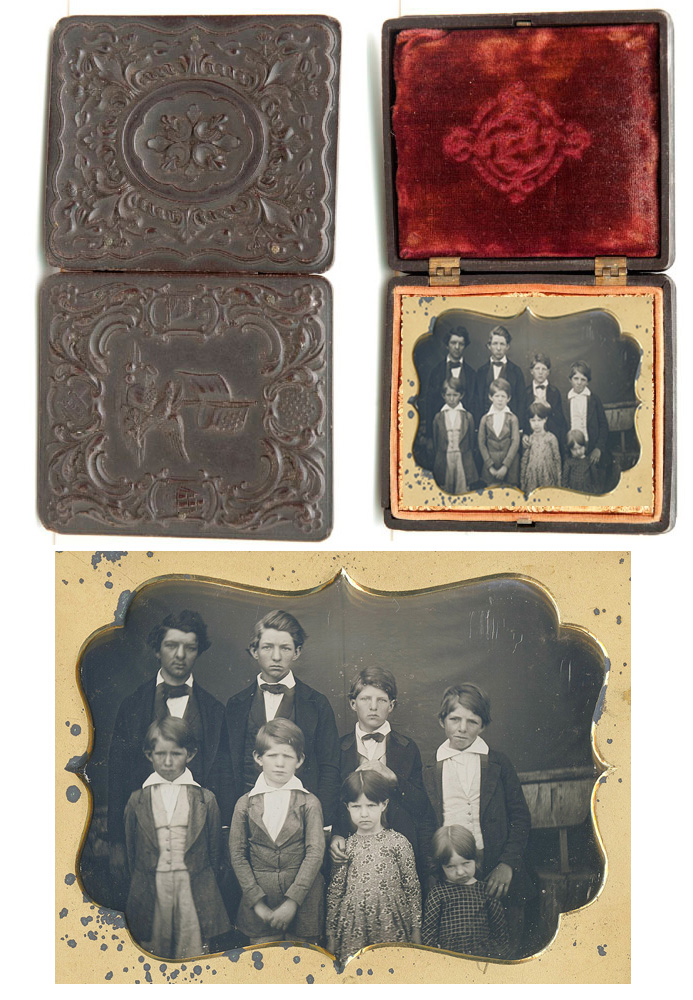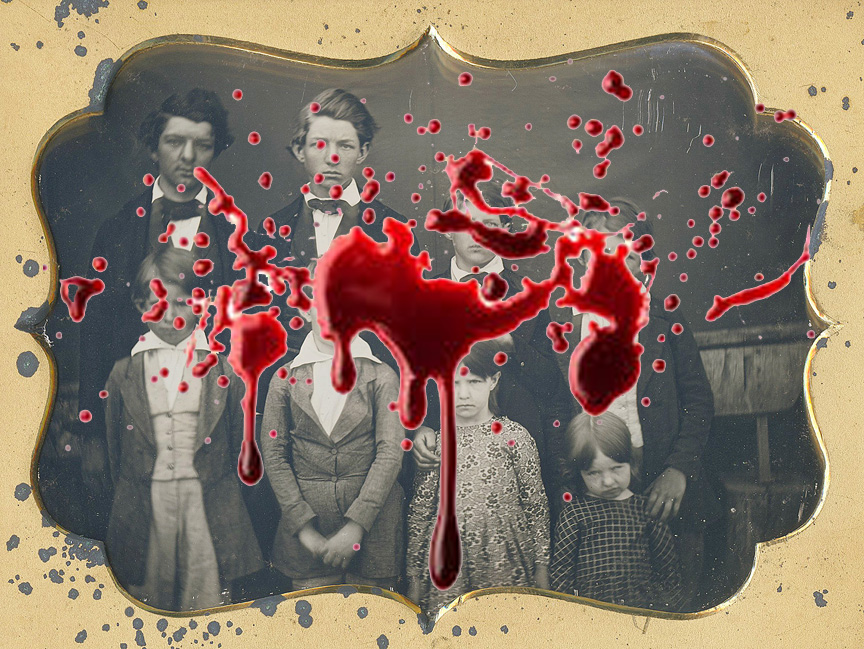A tintype was made by creating a direct positive on a thin sheet of metal coated with a dark lacquer or enamel and used as the support for the photographic emulsion. Tintypes enjoyed their widest use during the 1860s and 1870s,
How to make a tintype
Tintype portraits were at first usually made in a formal photographic studio, but later they were most commonly made by photographers working in booths or the open air at fairs and carnivals, as well photographers traveling with their studio set up in a wagon.
The traveling photography studio
The process was first described by Adolphe-Alexandre Martin in France in 1853. In 1856 it was patented by Hamilton Smith in the United States and by William Kloen in the United Kingdom. It was first called melainotype, then ferrotype by a rival manufacturer of the iron plates used, then finally tintype.
A tintype was more durable than a paper photograph
One or more hardy, lightweight, thin tintypes could be carried conveniently in a jacket pocket. They became very popular in the United States during the American Civil War. Although prints on paper soon displaced them as the most common type of photograph, the tintype process continued to enjoy considerable use throughout the 19th century and beyond, especially for casual portraiture by novelty and traveling street photographers.
>>>>>>>>>>>>>>>>>>>>>>>>>>>>>>>>>>>>>>>>>>>>




